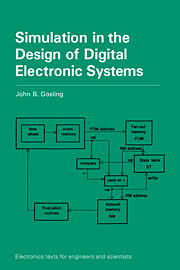White Paper: Simulation in the Design of Digital Electronic Systems
Author: IASR ADMIN
Abstract
This white paper explores the critical role of simulation in the design of digital electronic systems, drawing insights from John Gosling's expertise. Simulation techniques provide a virtual environment to test and validate designs before physical implementation, ensuring accuracy, efficiency, and reducing time-to-market. The paper delves into various simulation methodologies, their applications, and the benefits they offer in modern electronic design.
Introduction
Digital electronic systems have become an integral part of our daily lives, powering everything from smartphones and computers to complex industrial automation. The design process for these systems is intricate and requires meticulous attention to detail. Simulation has emerged as a powerful tool to streamline this process, enabling designers to verify the functionality, performance, and reliability of their designs before committing to physical prototypes.
Simulation Methodologies
- Behavioral Simulation:
- Focuses on the functional behavior of the design without considering the underlying hardware implementation.
- Used for early-stage verification and exploring different design options.
- Examples: Hardware Description Languages (HDLs) like Verilog and VHDL.
- Structural Simulation:
- Simulates the design at the gate level, considering the actual hardware components and their interconnections.
- Provides a more accurate representation of the physical implementation.
- Used for detailed timing analysis and power consumption estimation.
- Mixed-Signal Simulation:
- Combines behavioral and structural simulation to handle designs with both digital and analog components.
- Essential for applications involving mixed-signal interfaces and analog-to-digital converters.
- System-Level Simulation:
- Simulates the entire system, including hardware, software, and external interfaces.
- Helps in verifying the overall system behavior and performance.
- Used for co-simulation of hardware and software components.
Benefits of Simulation
- Early Error Detection: Simulation can identify design errors at an early stage, saving time and resources.
- Improved Design Quality: By thoroughly testing and validating designs, simulation helps ensure higher quality and reliability.
- Reduced Time-to-Market: Faster design iterations and reduced physical prototyping lead to shorter development cycles.
- Cost Reduction: Simulation can help minimize design and manufacturing costs by identifying potential issues early on.
- Enhanced Performance Optimization: Simulation can be used to optimize performance parameters like speed, power consumption, and area.
Simulation Challenges and Best Practices
- Model Accuracy: Ensuring accurate models of components and their interactions is crucial for reliable simulation results.
- Simulation Time: Large and complex designs can lead to long simulation times. Efficient simulation techniques and hardware acceleration can help mitigate this.
- Verification Coverage: Ensuring that all possible scenarios are covered during simulation is essential for thorough verification.
- Simulation Environment: The choice of simulation tools and environments can significantly impact the efficiency and accuracy of the process.
Conclusion
Simulation has become an indispensable tool in the design of digital electronic systems. By providing a virtual environment for testing and validation, simulation enables designers to create more accurate, efficient, and reliable designs. As technology continues to advance, simulation techniques will undoubtedly play an even more critical role in the development of future electronic systems.
References
- Gosling, John. Digital Design. (Book title)
- IEEE Standard for Verilog Hardware Description Language. IEEE Std 1364-2005.
- IEEE Standard for VHDL Language. IEEE Std 1076-2008.
- Cadence Design Systems. https://www.synopsys.com/
Note: The specific references and examples should be tailored to the content and examples provided in John Gosling's book. Contact ias-research.com



